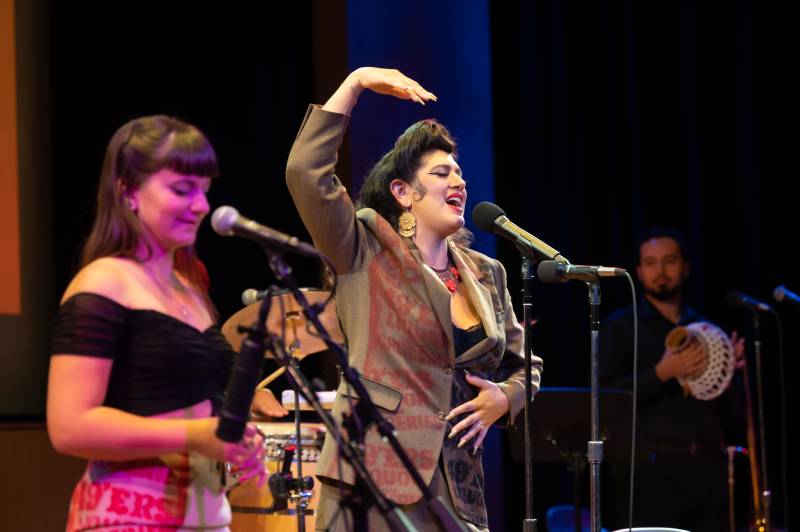Born in Colombia and embraced across Latin America, cumbia is the friendliest of African diaspora dance rhythms. It’s infinitely malleable — suitable for novice and expert dancers alike — and has adapted to local conditions wherever it has landed, from the Andean heights of Peru and Mexico’s Oaxaca Valley to the glittering nightclubs of Los Angeles.
It’s a foundational groove at Latin music events across the Bay Area. On July 21, Stanford Live presents Cumbia!@Frost, a triple bill that cogently illustrates why the multifarious form is once again in the midst of a popular resurgence.
Joining Colombian standard-bearers Vilma Diaz y La Sonora is the Los Angeles electronica-laced band El Feeling, plus Mission District rising star La Doña and DJ Wonway Posibul. The event is designed “to highlight cumbia from different angles,” says Bogotá-born Albert Montanez, who is the Stanford Live producer of artistic programs.
A confluence of African, Spanish and Indigenous influences, cumbia was a folkloric dance on Colombia’s Atlantic coast for centuries before emerging as a pervasive form of popular music in the 1950s. While Afro-Cuban and Nuyorican salsa eclipsed cumbia in the 1970s, particularly at home in Colombia, various iterations of the style continued to thrive around Latin America, where its easily danceable chu-chucu-chu groove made it ideal for multigenerational celebrations.


